So it's your first NSTA conference …
By Debra Shapiro
Posted on 2010-09-22
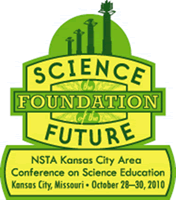 … and you’re wondering how to make the most of your time in Kansas City … or Baltimore … or Nashville. Not to worry: You’ve got mentors on the NSTA General Science listserv. They recently offered some tips for newbies.
… and you’re wondering how to make the most of your time in Kansas City … or Baltimore … or Nashville. Not to worry: You’ve got mentors on the NSTA General Science listserv. They recently offered some tips for newbies.
“It’s usually advisable to stay at one of the hotels NSTA has available,” observes Bill. “For one you get a discounted rate, and another they have a shuttle [at national conferences] for all the hotels listed in case they’re far from the convention center.” Those who bring their own cars will have to pay for parking, he points out. “I suggest you book the hotel through the NSTA website. That way you’re sure to get the reduced rate and the block of rooms,” he adds.
“One benefit of staying at a nearby hotel is that it’s easy to stop by your room and unload all the stuff you end up carrying around … freebies, stuff you purchase, conference programs, etc.,” says Heather. “If your room is not nearby, I’d suggest bringing a bag or something that rolls instead of having to be carried all day.” Some also suggest packing a fold-up duffel bag that can be used as an extra suitcase on the way home.
“I try to pick up posters that other teachers at my school can use also. The trinkets you pick up at some of the booths are great for classroom use,” reports Pamela. Nora advises “hit[ting] the vendors on Friday afternoon” because they “don’t want to take stuff home, so they give great stuff away.”
And this from Wendell: “I always spend at least a couple of hours at the NSTA [Science] Store just looking at all the trade books and professional development materials they have. It gives me a ‘hands-on’ opportunity to check out what interests me. I’ll always buy 2 [or] 3 books for my professional library.”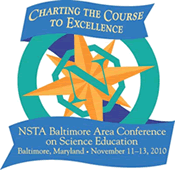
For gathering and taking home her conference goodies, Kathleen advocates the “buy a box and ship it” option, available at national conferences. “It’s not super cheap, but in my mind, well worth every cent! You get a box, put your name on it, and place it in a designated area. You can drop in and out as you wish to put stuff in the box,” then have it shipped home or to your school. “It’s made me more selective about what I take/keep—and it beats lugging it around.”
“Spend time looking at the things you know you can never afford,” counsels Nora. “I went home with no intentions of getting interactive boards but was asked to sit on a grantwriting team. We wrote a … grant that got the math and science teachers in our system interactive boards, Elmos, and clickers. I used some of the ‘buzzwords’ the vendors used in our grant.”
Kathleen suggests you “definitely talk to folks and allow plenty of time on the exhibit floor. The conversations there can be as valuable as the sessions.” If you think you might run out of time, follow Nora’s advice: “I also signed up my husband as a non-teaching spouse. He loved the computer and technology stuff and found amazing vendors I missed.”
As you proceed from exhibit booths to sessions to hotels, Wendell suggests you “carry some drinking water (or whatever vital fluids you’re into) and snacks in your backpack” and “wear comfortable shoes—you’ll do a lot of walking.”
“Attend sessions that pertain directly to what you are doing, but be sure to go to some just because you think they sound interesting,” advises Kathleen. “You never know what cool ideas you will come up 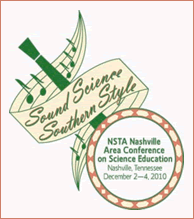 with.”
with.”
“Don’t be afraid to walk out of a session if you can tell from the start that it’s not for you,” urges Bill. “Presenters never like it, but you are there for you, not them.” He advises you to “have second and third choices for each time slot” and “get there early for big-time presenters (the ones who have their pictures in the program!) or you won’t have a seat.”
Nora adds, “some of the sessions that look lame are great. I look for crowds going into classes.”
Bring your camera to help you remember your sessions, counsels Pamela. “Sometimes a snapshot that I’ve taken about how someone set something up or how something looked during a presentation gives me food for thought when I get home and have time to process everything.”
Bill thinks “the best thing you might take from the conference is the people you meet. Don’t be afraid to strike up conversations with the people around you at a session.”
If you want to continue the conversation later on, Kathleen reminds you to bring your business cards: “It’s easy to make your own these days. When someone gives you their card, make a note on the back of it so that you can put a context to the name.”
At the end of each day, agree these experienced attendees, be sure to have fun. “[The] Middle Level Science Teachers usually have a free ice cream social,” says Nora. “There are often cool things to do at night. Enjoy them.”
What do scientists do?
By Mary Bigelow
Posted on 2010-09-14
I am really looking forward to this year’s Science & Children journal. Many of us teach with themes or essential questions that focus our instruction, and this year all of the issues of S&C will focus on aspects of using inquiry in the classroom. I would also encourage secondary teachers to browse through the articles for ideas that could relate to or be adapted to other grade levels, especially if your students are novices to inquiry processes. This month’s theme is “What Do Scientists Do?” and includes the editorial A Powerful Way to Learn and a comparison of traditional school science with the Experiences-Patterns-Explanations triangle (and what this looks like in a primary classroom).
Inquiry at Play shows that our younger students (PreK–Grade2) are at a perfect age to introduce processes such as asking questions, making observations, discussing patterns and categories, and solving problems. The author suggests inviting a scientist into the classroom to meet the students and share his or her work. (If a real visit is hard to schedule, perhaps a teleconference via Skype could be arranged.) Or the teacher or another guest could portray a scientist, using the suggestions in this article. SciLinks has biographies of scientists and a collection of websites on Careers in Science if you need additional information.
Thinking Like a Sssssscientist shows that elementary students can use authentic processes when studying topics such as snakes. I love the graphic that compares the traditional “scientific method” and an inquiry model used—note how the word “wonder” appears in each process! SciLinks has more on snakes.
This summer, I noticed purple boxes hanging from trees as I drove through the Northeast. They were part of a study of the range of the emerald ash borer, an insect invasive species. The teacher and students in the article Citizen Scientists also investigate the presence of invasive species SC091002 in a long-term study. The author has suggestions for other citizen-science projects that would engage students of any age.
Reading as Scientists describes a classroom project in which 6th graders learned and practiced how to read scientific material. The article includes a rubric for the followup writing assignment and examples of student work. Finding appropriate materials is a challenge—I like the downloadable articles on the Natural Inquirer and ActionBioScience websites.
If you’re thinking of ways to use video technology in your classroom, the authors of Lights, Camera, Action…It’s Science Friday have some suggestions. They describe how student “experts” share their experiences and expertise with others through short video segments that are broadcast within the school. I’m thinking that older students might enjoy this too, sharing with their peers or with younger students. The author includes suggestions for getting started with a similar program.
Dig Deeply and What’s Bugging You? show how traditional plant-growing activities can be “kicked up a notch” to guide students through open-ended investigations. If you and your students are thinking of other projects involving insects, check out the articles How Insects See, Through Their Eyes, and the websites on Insects in SciLinks.
Supporting Ideas with Evidence discusses how to guide students through learning about cause-and-effect studies with independent and dependent variables. And this issue has the debut of a column devoted to formative assessment “probes.” This month features the probe Doing Science to uncover students’ conceptions and misconceptions about scientific thinking.
And check out the Connections for this issue. Even if the article does not quite fit with your lesson agenda, this resource has ideas for handouts, background information sheets, data sheets, rubrics, etc.
Web resources for students
By Mary Bigelow
Posted on 2010-09-12
 I teach applied biology to 10th graders. This year, I have access to a cart of laptops to use in my classroom/lab. I’d like to have the students use the Internet to find information related to science topics as an extension of the textbook, but many of my students are struggling readers. Would Wikipedia be a good source?
I teach applied biology to 10th graders. This year, I have access to a cart of laptops to use in my classroom/lab. I’d like to have the students use the Internet to find information related to science topics as an extension of the textbook, but many of my students are struggling readers. Would Wikipedia be a good source?
—Michael, Harrisburg, Pennsylvania
Congratulations on having such a wonderful resource in your classroom! Working individually or in small groups, your students can have many opportunities to find and share information, work on labs and simulations, keep electronic notebooks, contribute to class websites or blogs, and create written and multimedia demonstrations of what they are learning.
Searching for information to supplement and extend what is in the textbook can be a way of differentiating instruction to meet students’ individual background levels and interests. Wikipedia articles are often among the first results returned in an Internet search. However, some teachers have raised concerns about the accuracy of information in the articles (see Wikipedia in the Science Class), and many schools block the site.
For example, I looked at the Wikipedia entry for “cells.” It’s a long, comprehensive discussion with many illustrations. A quick readability check (you can find several readability calculators online) estimates it is written at a 12.0 level. The length, reading level, and style of writing could be overwhelming or frustrating for some students.
Have you considered accessing NSTA’s SciLinks? Enter the search term “cell” and select grades 9-12 to get a list of focused categories such as Eukaryotic Cells or Cellular Respiration with websites selected and reviewed by other educators and correlated to the National Science Education Standards. Try terms such as Mitosis or Glycolysis for similar lists. You can tag specific sites as “favorites” and create a list of sites for your students to examine. Look at similar topics at the 5-8 grade level that could be appropriate for your struggling readers.
Some resources on my favorites list include Structure and Function of Cells from the Teachers’ Domain and Inside the Cell from the National Institute of General Medical Services.
__________
Within a day of responding to Michael, I heard back from him:
SciLinks is wonderful! I’m starting a unit on biochemistry in a few weeks, so I used the search term Carbohydrates. Within a few minutes, I had compiled a list of sites that would be appropriate for the content and for my students. For example, the first one on the list, Biomolecules: The Carbohydrates,was just what I was looking for. I also found a biochemistry discussion on the Chem4Kids site that would be very helpful for students who need a basic introduction to the topic. I added links from the sites on my list to my course webpage so students can access them easily in school (or even at home, I can hope). I also found some simulations I can display on the interactive white board in my room.
I’m going to do the same for my earth science classes. I also looked at the tutorials about the Quiz Manager. I’d like to try this feature, too. Thanks!
Photo: http://www.flickr.com/photos/cristic/3297941286/
 I teach applied biology to 10th graders. This year, I have access to a cart of laptops to use in my classroom/lab. I’d like to have the students use the Internet to find information related to science topics as an extension of the textbook, but many of my students are struggling readers. Would Wikipedia be a good source?
I teach applied biology to 10th graders. This year, I have access to a cart of laptops to use in my classroom/lab. I’d like to have the students use the Internet to find information related to science topics as an extension of the textbook, but many of my students are struggling readers. Would Wikipedia be a good source?
—Michael, Harrisburg, Pennsylvania
Children learn “All About Me” while using science tools
By Peggy Ashbrook
Posted on 2010-09-11
Beginning a new school year often means teachers have new students to get to know, and vice versa. Returning students have report cards or portfolios from the previous year. Children who are attending the school for the first time don’t have those records so information from their family is especially important. But there is much to learn! Starting the year with a look at ourselves, “All About Me” (a favorite theme of young children and adults!), is one way to learn about the child’s life—family, favorite books and foods, and places to visit, gain an initial appreciation of their personality and skills, and introduce the beginnings of scientific inquiry.
 Explorations about the senses of smell and touch and charting the “favorites” teach that each of us have different preferences, and can lead into a discussion of why we record and reflect on data. Cover small containers of freshly cut lemons, onion, cinnamon stick and coffee beans to smell. Surprisingly to me, onion was the favorite for a few of my children.
Explorations about the senses of smell and touch and charting the “favorites” teach that each of us have different preferences, and can lead into a discussion of why we record and reflect on data. Cover small containers of freshly cut lemons, onion, cinnamon stick and coffee beans to smell. Surprisingly to me, onion was the favorite for a few of my children.
Feely Boxes with a small opening for a hand reduce our reliance on our sense of sight. Using science tools for measuring, such as a bathroom scale to see “how hard you will be to lift” and a length of hand prints or a measuring tape to see how long your arm is, help children become familiar with tools that remain available all year for other explorations.
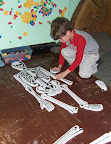 Children or teachers can list the descriptive words they use as they look at their hands and hair with a magnifier, another tool they will use year-round, perhaps learning new words, or some in additional languages. Putting together a child-size flat foam puzzle of a human skeleton is often a group effort with much discussion about who gets to put on the head, the relative lengths of arm and leg bones, and who is taller, the skeleton or the child.
Children or teachers can list the descriptive words they use as they look at their hands and hair with a magnifier, another tool they will use year-round, perhaps learning new words, or some in additional languages. Putting together a child-size flat foam puzzle of a human skeleton is often a group effort with much discussion about who gets to put on the head, the relative lengths of arm and leg bones, and who is taller, the skeleton or the child.
Here are a two books for thinking about diversity in animal/human bodies:
Two Eyes, a Nose, and a Mouth by Roberta Grobel Intrater. 2000. Scholastic. A book of face photographs with rhyming text delighting in the variety in human faces feature by feature.
What do you do with a tail like this? by Steve Jenkins and Robin Page. 2003. Houghton Miffllin. Unique and interesting body parts and questions lead to finding out how animals’ body shapes and functions help them survive.
Two more books, for talking about how our bodies relate to who we are:
I Like Me! by Nancy Carlson. 1990. Puffin. What do we like about ourselves? Carlson’s pig knows her strengths and what she likes about herself.
I Like Myself! by Karen Beaumont, illustrated by David Catrow. 2004. Harcourt Children’s Books. Making silly faces, doing near impossible feats, and all while appreciating herself, a sweet child uncovers all the ways she likes herself.
I like the smell of chocolate.
Peggy
Beginning a new school year often means teachers have new students to get to know, and vice versa. Returning students have report cards or portfolios from the previous year. Children who are attending the school for the first time don’t have those records so information from their family is especially important. But there is much to learn!
Science and creativity
By Mary Bigelow
Posted on 2010-09-09
Recently, the ISTE Connects blog had a discussion How do you teach creativity? in response to the recent Newsweek article The Creativity Crisis. We often think of creativity in terms of the arts, but I had a great conversation with a colleague on what creativity would look like in science. I’m not sure we can teach or test creativity per se, but it would be an interesting discussion on how we can promote, encourage, model, guide, and recognize creative thinking in our science classrooms – new, different, or untraditional ways of problem solving, problem finding, inventing, innovating, and communicating.
In the article Encouraging Creativity in the Science Lab,the author shares some techniques she uses to get students to think outside of the box. She shows how to modify activities from cookbook procedures to more open-ended investigations. She also shares some misconceptions that students may have about creativity.
Another type of creativity is encouraging students to find connections between science and other subjects. The author of Supporting Right-Brained Thinking describes a project in which his students integrated history, writing, and genetics. He refers several times to Daniel Pink’s book A Whole New Mind (which would be an excellent choice for a book discussion group).
Speaking of creativity, the article What Microbe Are You? has activities to help students learn about the diversity of marine microbes, including a different take on dichotomous keys. The “What Microbe Are You?” quiz mimics a personality quiz to guide the user through a dichotomous key. (Based on my choices, I was matched with the diatom Elphidium crispum.) In the Connections section, you can get the entire key. SciLinks has additional websites on microbes and dichotomous keys.
Inquiry can be another type of creativity, and this issue has three articles related to inquiry in the physical sciences. Big Air describes a lesson in applying the concept of projectile motion to real-world situations. Fueling the Car of Tomorrow describes a curriculum unit that addresses problem solving in science and technology, along with a link to the materials. The Art of Electron Spinning describes a classroom project that connects students with concepts and research in nanotechnology topics. SciLinks can provide background information and additional suggestions for projectiles and nanotechnology.
Creativity in the science classroom also involves some risk-taking on the part of students and teachers—moving beyond the comfort zone of traditional expectations and predictable outcomes. Students may need modeling and guidelines to foster and focus their creativity. But fostering creativity does not mean ignoring safety issues in the classroom!
Check out the Connections for this issue. Even if the article does not quite fit with your lesson agenda, this resource has ideas for handouts, background information sheets, data sheets, rubrics, etc.
New freebie book chapters available
By Claire Reinburg
Posted on 2010-09-08
 We’ve added to the list of chapters you can download for free from NSTA Press books! Visit the free chapters page on the NSTA website to browse the newest additions, including selections from Uncovering Student Ideas in Physical Science, Volume 1: Force and Motion, Using Science Notebooks in Middle School, and More Chemistry Basics: Stop Faking It!
We’ve added to the list of chapters you can download for free from NSTA Press books! Visit the free chapters page on the NSTA website to browse the newest additions, including selections from Uncovering Student Ideas in Physical Science, Volume 1: Force and Motion, Using Science Notebooks in Middle School, and More Chemistry Basics: Stop Faking It!
What is a Scientist? Resources for young children
By Peggy Ashbrook
Posted on 2010-09-06
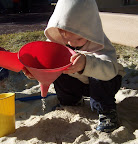 What do your students think of when you talk about scientists? Is it Albert Einstein with long white hair, a person in a lab coat working with test tubes, or Sid the Science Kid? The work of science inquiry takes place in labs and many other locations. Broaden your students’ appreciation of science by broadening their understanding of the work of scientists. Read biographies, set up imaginative play centers with tools and clothes for working scientists, and invite local scientists of all kinds to visit your class for a short visit to discuss their work. Here are some resources to get you started:
What do your students think of when you talk about scientists? Is it Albert Einstein with long white hair, a person in a lab coat working with test tubes, or Sid the Science Kid? The work of science inquiry takes place in labs and many other locations. Broaden your students’ appreciation of science by broadening their understanding of the work of scientists. Read biographies, set up imaginative play centers with tools and clothes for working scientists, and invite local scientists of all kinds to visit your class for a short visit to discuss their work. Here are some resources to get you started:
Book resources for scientist biographies
Search the NSTA Recommends book reviews for “scientist” at http://www.nsta.org/recommends/?lid=tnav to find books about Scientists at Work, Extreme Scientists, Frog Scientists, and Scientists Who Made History.
American Library Association, Great Websites for Children: Biographies, http://www.ala.org/gwstemplate.cfm?section=greatwebsites&template=/cfapps/gws/displaysection.cfm&sec=11
Resources about scientists working today
Scientist at Work blog about scientists working today: http://scientistatwork.blogs.nytimes.com/
Read about soils scientists at: http://soils.usda.gov/education/facts/careers.html , and Soil Science Society of America https://www.soils.org/lessons/ask
Cool Careers at Sci4Kids, Agricultural Research Service, http://www.ars.usda.gov/is/kids/CoolCareers/coolestcareers.htm
Resources about inquiry
A Study Guide: Inquiry Science in the Elementary Classroom from the Education Development Center, Inc, http://cse.edc.org/products/inquiryscienceelemclassroom/default.asp (including the graphic on the flow of science inquiry in elementary grades, by Hubert Dyasi and Karen Worth at http://cse.edc.org/products/inquiryscienceelemclassroom/Inquiry.pdf )
University of California Museum of Paleontology. Understanding Science, http://undsci.berkeley.edu/index.php has another useful graphic on “How science works” at http://undsci.berkeley.edu/images/flowchart_35.pdf
National Research Council (NRC). 1996. National science education standards. Washington, DC: National Academy Press. http://www.nap.edu/openbook.php?isbn=0309053269
American Association for the Advancement of Science. 1993. Benchmarks for Science Literacy. See the grade 2 statement of what all students should know and be able to do in science, mathematics, and technology by the end of grade 2. http://www.project2061.org/publications/bsl/online/index.php
Resources on how children’s play supports their learning
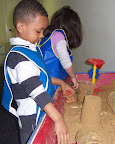 Articles on Supporting Pretend Play in Early Childhood Research & Practice, on how teacher support of dramatic play (such as pretending to be a veterinarian) can support knowledge and skill development in many curriculum areas, and take a look through the extensive bibliography on play at: http://ecrp.uiuc.edu/v10n2/introduction.html
Articles on Supporting Pretend Play in Early Childhood Research & Practice, on how teacher support of dramatic play (such as pretending to be a veterinarian) can support knowledge and skill development in many curriculum areas, and take a look through the extensive bibliography on play at: http://ecrp.uiuc.edu/v10n2/introduction.html
Can the Right Kinds of Play Teach Self-Control? By Paul Tough. The New York Times, September 25, 2009. A version of this article appeared in print on September 27, 2009, on page MM31 of the New York edition. http://www.nytimes.com/2009/09/27/magazine/27tools-t.html?_r=2&ref=magazine
National Association for the Education of Young Children. 2009. Developmentally Appropriate Practice in Early Childhood Programs Serving Children from Birth through Age 8. http://www.naeyc.org/files/naeyc/file/positions/PSDAP.pdf
The Serious Need for Play by Melinda Wenner. Scientific American Mind. January 28, 2009 http://www.melindawenner.com/Clips_files/MiQ109Wenn2p.pdf
Expose your children to the work of scientists through books, visiting scientists, fieldtrips, and play. Comment below to add your resources to this list.
Peggy
 What do your students think of when you talk about scientists? Is it Albert Einstein with long white hair, a person in a lab coat working with test tubes, or Sid the Science Kid?
What do your students think of when you talk about scientists? Is it Albert Einstein with long white hair, a person in a lab coat working with test tubes, or Sid the Science Kid?
Big Air
Method and Strategies: Supporting Ideas With Evidence
Meet the parents
By Mary Bigelow
Posted on 2010-08-31
 I’m a new middle school science teacher, and the thought of back-to-school night is already making me nervous. What should I expect? What should I do?
I’m a new middle school science teacher, and the thought of back-to-school night is already making me nervous. What should I expect? What should I do?
—Kate, Savannah, Georgia
Whether it’s held before school starts or during the first few weeks, this annual event provides an opportunity for the important adults in a student’s life to meet each other. It also gives parents (or other caregivers) a chance to become more familiar with the school. Ask a colleague what format is used in your school, what the expectations are, and how the event is publicized. Most middle schools have their event during the first month or so of the school year.
Typically, the parent is given a modified copy of the student’s schedule to follow during a “back-to-school” night. The bell rings as parents move from classroom to classroom for brief periods. The schedule is very compact; often there is only time for brief introductions. There’s not much time for questions and conversations or for parents to look around your classroom/lab before the next bell rings.
An “open house” is less structured. Parents get a copy of the student’s schedule but are free to visit the classrooms in any order. This is a more leisurely pace, but you can be overwhelmed if you get a lot of parents at once or if one parent starts to monopolize your time.
With either format, some schools also invite students to attend as a “take your parents to school” event. This provides students with the opportunity to introduce their parents and teachers. Students can guide their parents to the classrooms and show them some of their work.
Regardless of which type of event your school hosts, here are some things you can do to get ready.
Make sure the classroom/lab is clean and tidy, even if you have to stow some materials away for the evening. Put anything away that could be a safety hazard (chemicals, scalpels, etc.) and keep your grade book or other confidential or personal information out of sight. Display your safety posters and equipment in prominent places. Prepare a brief handout, syllabus, or pamphlet with your contact information, a statement of your teaching philosophy or beliefs, a course outline, and other information or requirements. Some teachers prepare business cards with their school address, phone number, email address, and the URL of the class web page. Create a sign for the hallway with your name, room number, and your picture. Prepare a sign-in sheet with spaces for the parent’s name, the student’s name, and a phone number or email address you can use to contact the parent. (Some schools have a parent meeting first, so the parents may have already signed in.)
On the night of the big event, greet the parents just inside the door with a handshake and your biggest smile as you give them your handouts and thank them for coming. What happens during the event depends on the format. For a back-to-school schedule, you’ll have time for a brief presentation describing your course topics and activities, leaving a few minutes for questions. For an open house, drop-in format, after you greet individual parents, invite them to explore displays illustrating what you do in science: collections of objects to examine, an example of a science notebook, a simple activity they could do (e.g., with magnets, hand lenses), a self-running PowerPoint highlighting a project or lab investigation, and displays of ungraded student work, both written and multimedia. If the students accompany their parents, they could show them their science notebooks and other projects they’re working on.
In either format, be very firm with parents that this is not the appropriate time to discuss individual student issues. Encourage the parents to make an appointment or get their names to contact them later. Explain you can’t always return calls or respond to email immediately during the day when classes are in session, but you will reply as promptly as possible.
After the event, record the number of parents you met and reflect on any concerns raised. Follow up on any questions or conference requests.
Even with all of the preparation and publicity, sometimes the turnout is less than expected. Keep in mind some parents have to deal with work schedules, childcare arrangements, or transportation issues. Others may be contending with language barriers (another reason to encourage students to accompany them).
Those parents who attend deserve your respect and gratitude. Take a deep breath—I’m sure you’ll do a fine job.
Photo: http://www.flickr.com/photos/dave_mcmt/184383354/
 I’m a new middle school science teacher, and the thought of back-to-school night is already making me nervous. What should I expect? What should I do?
I’m a new middle school science teacher, and the thought of back-to-school night is already making me nervous. What should I expect? What should I do?
—Kate, Savannah, Georgia



